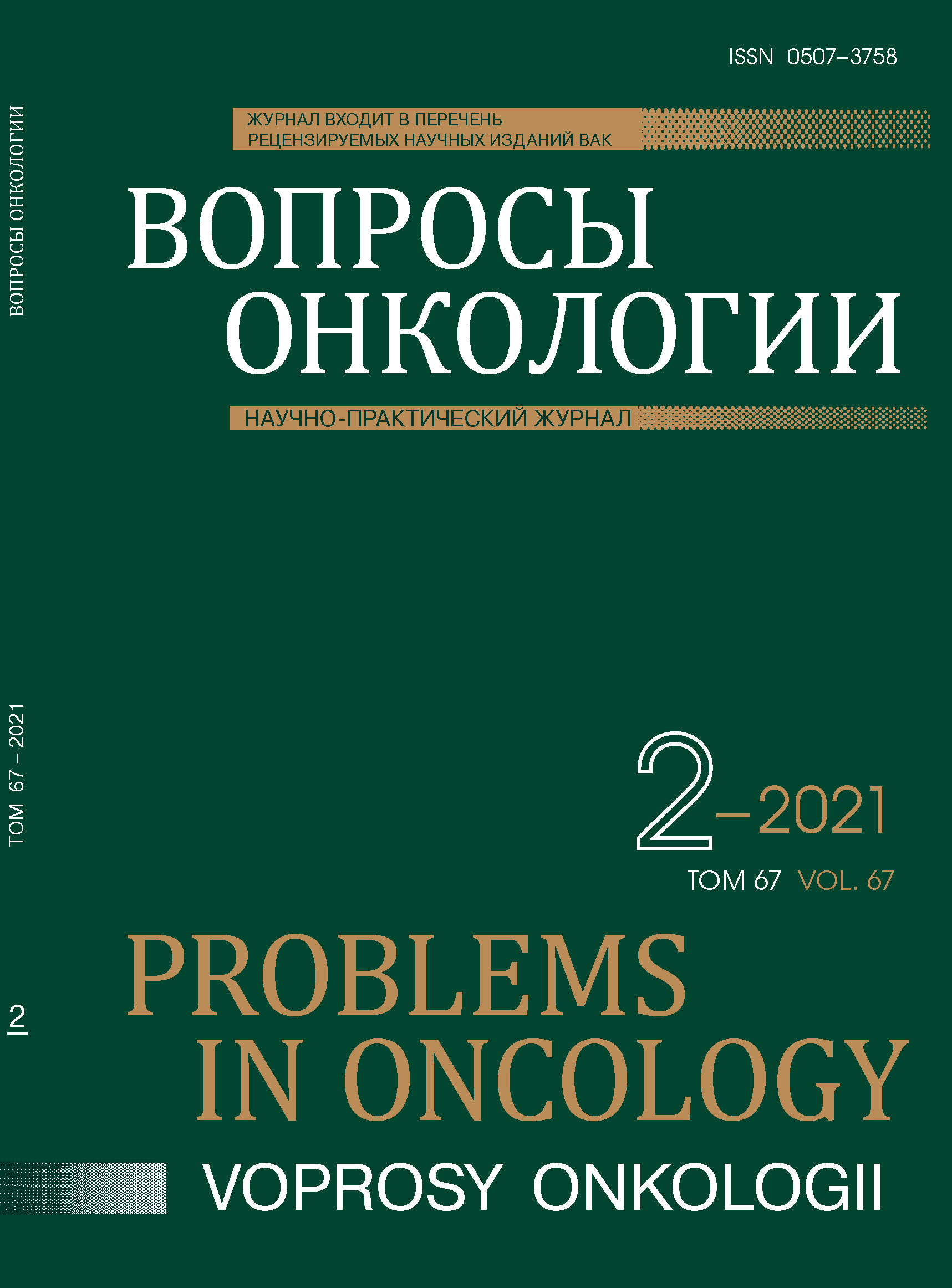Аннотация
В настоящее время гипертермия признана одним из перспективных методов при комбинированном лечении злокачественных опухолей. Тем не менее, для большинства из существующих способов нагрева опухолевых тканей достаточно трудно реализовать точную локализацию теплового воздействия. Целью данного исследования является сравнение двух типов имплантатов для интраоперационной локальной гипертермии ложа опухоли, осуществляемого с помощью индукционного нагрева в переменном магнитном поле субмегагерцового диапазона. Композитные имплантаты первого типа создаются на основе самополимеризующейся пластической массы, смешанной с электропроводными ферромагнитными частицами. Второй тип имплантатов представляет собой полый объект с тонкими стенками, повторяющий форму опухоли. Имплантаты этого типа заполняются жидкометаллическим немагнитным сплавом, имеющим температуру плавления ниже комнатной. Модельные имплантаты нагревались в индукторе собственной конструкции с короткой цилиндрической катушкой диаметром 35 см. Биологические ткани моделировались с помощью геля для УЗИ. Экспериментальные результаты показывают, что имплантаты обоих типов нагревались во внешнем переменном магнитном поле с частотой 90 кГц и амплитудой, не превышающей 4 кА/м, до температур, которые допускают как традиционную гипертермию (нагрев тканей до 41-45ºС), так и термическую абляционную терапию (нагрев тканей до температуры выше 50ºС). Получено хорошее совпадение экспериментальных данных с модельными численными расчетами.
Библиографические ссылки
Falk M.H., Issels R.D. Hyperthermia in oncology. Int J Hyperthermia. 2001;17:1-18. https://doi.org/10.1080/02656730150201552.
Hurwitz M., Stauffer P. Hyperthermia, radiation and chemotherapy: The role of heat in multidisciplinary cancer care. Semin Oncol. 2014; 41: 714-729. https://doi.org/10.1053/j.seminoncol.2014.09.014.
Datta N.R. et al. Local hyperthermia combined with radiotherapy and-/or chemotherapy: Recent advances and promises for the future. Cancer Treatment Reviews. 2015; 41(Issue 9): 742–753. doi: https://doi.org/10.1016/j.ctrv.2015.05.009.
Frey B., Weiss E.M., Rubner Y. et al. Old and new facts about hyperthermia-induced modulations of the immune system. Int J Hyperthermia. 2012;28(6):528-42. https://doi.org/10.3109/02656736.2012.677933.
Yohsuke Yagawa, Keishi Tanigawa, Yasunobu Kobayashi, Masakazu Yamamoto. Cancer immunity and therapy using hyperthermia with immunotherapy, radiotherapy, chemotherapy, and surgery J Cancer Metastasis Treat. 2017;3:218-30. https://doi.org/10.20517/2394-4722.2017.35.
Gross E.J., Cetas T.C., Stauffer P.R. et al. Experimental assessment of phased-array heating of neck tumours. Int J Hyperthermia. 1990;6:453-74. https://doi.org/10.3109/02656739009141151.
Paulides M.M., Bakker J.F., Linthorst M. et al. The clinical feasibility of deep hyperthermia treatment in the head and neck: New challenges for positioning and temperature measurement. Phys Med Biol. 2010;55:2465-80. https://doi.org/10.1088/0031-9155/55/9/003.
Canters R.A., Wust P., Bakker J.F.,Van Rhoon G.C. A literature survey on indicators for characterisation and optimisation of SAR distributions in deep hyperthermia, a plea for standardisation. Int J Hyperthermia, 2009;25: 593-608. https://doi.org/10.3109/02656730903110539.
Mack C.F., Stea B., Kittelson J.M. et al. Interstitial thermoradiotherapy with ferromagnetic implants for locally advanced and recurrent neoplasms. International Journal of Radiation Oncology Biology Physics. 1993;27:109-115. https://doi.org/10.1016/0360-3016(93)90427-w.
Chin R.B., Stauffer P.R. Treatment planning for ferromagnetic seed heating. Int J Radiat Oncol Biol Phys. 1991;21:431-9. https://doi.org/10.1016/0360-3016(91)90792-3.
Ivkov R. Magnetic nanoparticle hyperthermia: A new frontier in biology and medicine? International Journal of Hyperthermia. 2013;29(8):703-705. http://dx.doi.org/10.3109/02656736.2013.857434.
Sohail A., Ahmad Z., Bég O.A. et al. A review on hyperthermia via nanoparticle-mediated therapy. Bulletin du Cancer. 2017 May;104(5):452-461. doi: https://doi.org/10.1016/j.bulcan.2017.02.003.
Silvio Dutz, Rudolf Hergt. Magnetic nanoparticle heating and heat transfer on a microscale: Basic principles, realities and physical limitations of hyperthermia for tumour therapy. International Journal of Hyperthermia. 2013; 29(Issue 8): 790-800 https://doi.org/10.3109/02656736.2013.822993.
Wei Y., Zhao M. Z., Yang F. et al. Iron overload by superparamagnetic iron oxide nanoparticles is a high risk factor in cirrhosis by a systems toxicology assessment. Sci. Rep. 2016; 6: Article number 29110. https://doi.org/10.1038/srep29110.
Chu K.F., Dupuy D.E. Thermal ablation of tumours: biological mechanisms and advances in therapy Nature Reviews Cancer. 2014;14: 199–208. https://doi.org/10.1038/nrc3672.
Schuster H., Kopf H. Thermoablation: a new treatment option to replace surgical intervention? MEMO. 2015;8: 242. https://doi.org/10.1007/s12254-015-0232-6.
Васильченко И.Л., Виноградов В.М., Пастушенко Д.А. и др. Использование локального индукционного нагрева в лечении злокачественных новообразований. Вопросы онкологии. 2013;2:84-89. https://doi.org/10.20535/s0021347015030024.
Stauffer P.R., Vasilchenko I.L., Osintsev A.M. et al. Tumor bed brachytherapy for locally advanced laryngeal cancer: a feasibility assessment of combination with ferromagnetic hyperthermia. Biomedical Physics and Engineering Express. 2016; 2: 5 https://doi.org/10.1088/2057-1976/2/5/055002.
Васильченко И.Л., Осинцев А.М., Глушков А.Н. и др. Способ персонализированной интраоперационной контактной локальной гипертермии для лечения местнораспространенных злокачественных опухолей. Патент на изобретение RUS № 2565810. Заявка № 2014124417/14 от 16.06.2014. Опубл. 20.10.2015.
Tingyi Liu; Prosenjit Sen; Chang-Jin Kim. Characterization of Nontoxic Liquid-Metal Alloy Galinstan for Applications in Microdevices. Journal of Microelectromechanical Systems. 2012;21 (2):443-450. doi: 10.1109/JMEMS.2011.2174421.
Guyue Bo, Long Ren, Xun Xu et al. Recent progress on liquid metals and their applications, Advances in Physics: X. 2018;3(1). doi: 10.1080/23746149.2018.1446359.
Yue L., Hu Q., Lin Y. et al. Transformable liquid-metal nanomedicine. Nature Communications. 2015;6:10066. doi: 10.1038/ncomms10066.
Yue Yu, Eijiro Miyako. Alternating-Magnetic-Field-Mediated Wireless Manipulations of a Liquid Metal for Therapeutic Bioengineering. 2018;3:134-148. doi: 10.1016/j.isci.2018.04.012.
Muhamad F. bin Othman, Nabil R. Mitry, Valerie J. Lewington et al. Re-assessing gallium-67 as a therapeutic radionuclide. Nuclear Medicine and Biology. 2017; 46:12-18. doi: 10.1016/j.nucmedbio.2016.10.008.
Kanaun S., Levin V. Effective Field Method in the Theory of Heterogeneous Media. In: Effective Properties of Heterogeneous Materials. Editors: M. Kachanov and I. Sevostianov. Springer. 2013: 231-237. doi: 10.1007/978-94-007-5715-8_3.

Это произведение доступно по лицензии Creative Commons «Attribution-NonCommercial-NoDerivatives» («Атрибуция — Некоммерческое использование — Без производных произведений») 4.0 Всемирная.
© АННМО «Вопросы онкологии», Copyright (c) 2021
